Maintaining healthy cholesterol levels is crucial for heart health and overall well-being. A well-structured low-cholesterol meal plan can play a significant role in managing cholesterol levels and preventing cardiovascular disease.
This guide provides practical meal ideas, benefits, and tips for creating a balanced diet that supports heart health. Whether you’re starting a new dietary routine or looking to refine your current eating habits, these insights will help you make informed choices for a healthier lifestyle.
Low-cholesterol Diet Is Essential for Heart Health
A low-cholesterol diet is essential for reducing the risk of heart disease and stroke. High cholesterol levels, particularly low-density lipoprotein (LDL) cholesterol, can lead to the buildup of plaque in arteries, restricting blood flow and increasing the risk of cardiovascular events.
Adopting a diet that emphasizes heart-healthy meals and focuses on cholesterol management can significantly impact your heart health.
The primary goals of a low-cholesterol diet are to:
- Reduce saturated and trans fats, which contribute to high cholesterol levels.
- Increase the intake of fiber-rich foods that help lower cholesterol.
- Incorporate healthy fats that support heart health without raising cholesterol levels.
Read more:
10 Low-cholesterol Meal Plan Ideas
Here are ten cholesterol-friendly meal ideas that are both nutritious and delicious, helping you stay on track with your cholesterol management goals:
1. Zucchini Noodles with Pesto
- Spiralize zucchini into noodles.
- Prepare a homemade pesto using basil, garlic, pine nuts, and a touch of olive oil.
- Toss the zucchini noodles with the pesto sauce.
- Serve and enjoy.
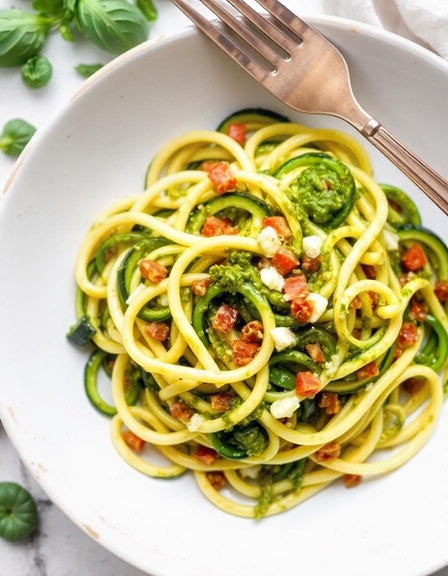
Benefits: A low-carb, high-fiber meal with healthy fats from pesto, perfect for reducing cholesterol levels.
2. Grilled Salmon with Quinoa
- Season salmon fillets as desired.
- Grill the salmon fillets until cooked through.
- Cook quinoa according to package instructions.
- Serve the grilled salmon over a bed of cooked quinoa.
- Add a side of steamed vegetables for added nutrients.
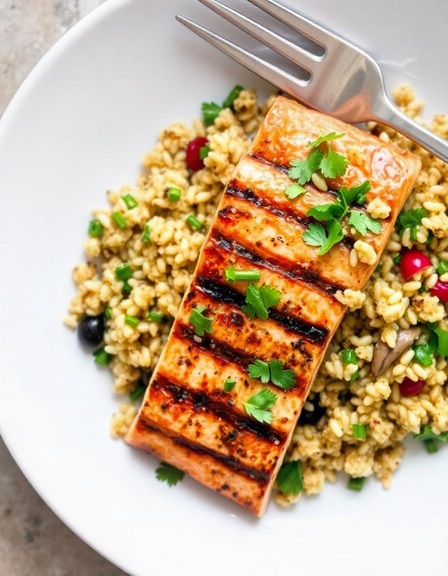
Benefits: Rich in omega-3 fatty acids and lean protein, this dish supports heart health and helps lower cholesterol naturally.
3. Whole Wheat Pasta with Tomato and Spinach Sauce
- Cook whole wheat pasta according to package instructions.
- Prepare a sauce by cooking tomatoes, spinach, garlic, and a splash of olive oil.
- Toss the cooked pasta with the sauce.
- Serve and enjoy.
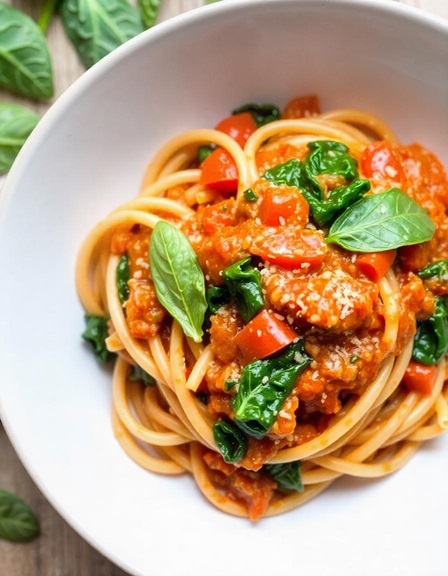
Benefits: High in fiber and antioxidants, this meal supports a balanced diet for cholesterol and overall health.
4. Roasted Chickpeas and Vegetable Bowl
- Preheat the oven and prepare a baking sheet.
- Toss chickpeas and a mix of your favorite vegetables with olive oil and spices.
- Roast in the oven until chickpeas are crispy and vegetables are tender.
- Serve the roasted chickpeas and vegetables in a bowl with a side of brown rice or quinoa.
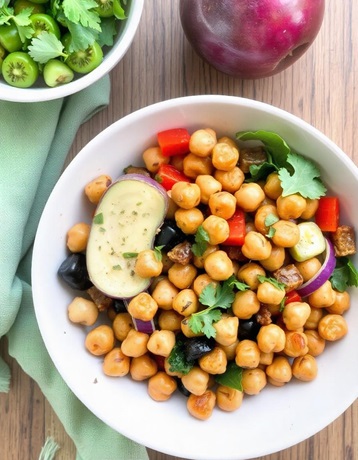
Benefits: Packed with fiber and plant-based protein, this bowl is great for lowering cholesterol naturally.
5. Chicken Salad with Avocado Dressing
- Shred cooked chicken breast.
- Combine shredded chicken with mixed greens and cherry tomatoes.
- Prepare a dressing from mashed avocado, lime juice, and a touch of olive oil.
- Toss the salad with the avocado dressing.
- Serve and enjoy.
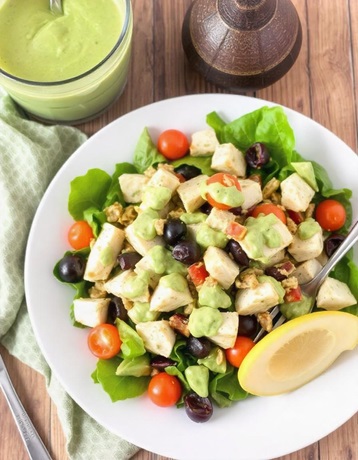
Benefits: Lean protein and healthy fats from avocado make this a heart-healthy option for managing cholesterol levels.
Find out the Real Deal About Cholesterol: Causes, Symptoms, Diet, and Natural Ways to Control It
6. Egg White Omelette with Spinach and Mushrooms
- Separate egg whites from yolks.
- Cook an omelette using egg whites.
- Fill the omelette with sautéed spinach and mushrooms.
- Season with herbs and spices as desired.
- Serve and enjoy.
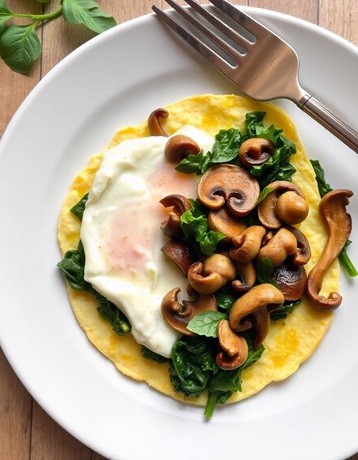
Benefits: Low in cholesterol and high in nutrients, this omelette is a great choice for a healthy breakfast or lunch.
7. Grilled Tofu Wrap with Hummus
- Grill tofu strips until golden brown.
- Spread hummus on a whole-grain tortilla.
- Add the grilled tofu strips, lettuce, and your favorite veggies.
- Wrap and enjoy.

Benefits: A plant-based, low-cholesterol meal that’s rich in protein and fiber, perfect for a quick and healthy lunch.
8. Roasted Vegetables with Olive Oil
- Preheat the oven and prepare a baking sheet.
- Toss a variety of vegetables such as bell peppers, zucchini, and carrots with olive oil.
- Roast the vegetables in the oven until tender.
- Serve and enjoy.

Benefits: Roasting vegetables with olive oil enhances flavor and provides healthy fats while maintaining a low cholesterol profile.
9. Black Bean Tacos with Salsa and Guacamole
- Heat black beans and season as desired.
- Fill soft corn tortillas with the black beans.
- Top with fresh salsa and a dollop of guacamole.
- Serve and enjoy.

Benefits: High in fiber and heart-healthy fats, these tacos support cholesterol management and make for a tasty meal.
10. Baked Sweet Potato with a Side of Steamed Broccoli
- Preheat the oven and prepare a baking sheet.
- Bake sweet potatoes until tender.
- Steam broccoli until cooked.
- Serve the baked sweet potato with steamed broccoli.
- Optionally, sprinkle with your favorite herbs.

Benefits: Sweet potatoes are rich in fiber and antioxidants, while broccoli adds additional nutrients and supports a cholesterol-friendly diet.
Read more:
Benefits of Following a Low-Cholesterol Meal Plan
- Reduced Risk of Heart Disease: Lowering cholesterol helps prevent plaque buildup in arteries, reducing the risk of heart attacks and strokes.
- Improved Cardiovascular Health: A diet low in saturated and trans fats helps maintain healthy blood pressure and cholesterol levels.
- Enhanced Weight Management: High-fiber foods and healthy fats support weight control and prevent overeating.
- Better Digestion: Fiber-rich foods promote healthy digestion and prevent constipation.
- Increased Energy Levels: Balanced meals provide sustained energy throughout the day, avoiding the energy crashes associated with high-fat diets.
How to Structure a Low-cholesterol Meal Plan
Focus on Fiber
Fiber is essential for digestive health and helps manage cholesterol levels by binding to cholesterol and aiding its removal from the body. Incorporating a variety of fruits, vegetables, whole grains, and legumes increases fiber intake, which can help lower LDL (bad) cholesterol levels and support overall heart health. Fiber also promotes satiety, which can aid in weight management and prevent overeating.
Choose Healthy Fats
Healthy fats, such as unsaturated fats found in olive oil, avocados, and nuts, can help improve heart health by reducing LDL cholesterol levels and increasing HDL (good) cholesterol. Unlike saturated and trans fats, which can raise LDL cholesterol and increase the risk of heart disease, unsaturated fats provide essential fatty acids and support overall cardiovascular health.
Include Lean Proteins
Lean proteins, such as those from poultry, fish, and plant-based sources like beans and tofu, are low in saturated fat and cholesterol. Choosing lean proteins helps reduce overall cholesterol intake and provides essential nutrients for muscle maintenance and repair. Plant-based proteins are particularly beneficial as they also offer additional fiber and antioxidants.
Plan Balanced Meals
A balanced meal includes a combination of protein, healthy fats, and fiber. This balance helps regulate blood sugar levels, supports sustained energy throughout the day, and aids in cholesterol management. Each component plays a crucial role: protein supports muscle health, healthy fats promote heart health, and fiber aids in digestion and cholesterol control.
Stay Hydrated
Proper hydration is crucial for maintaining overall health and supporting various bodily functions, including digestion and metabolism. Drinking plenty of water helps flush out toxins, supports nutrient absorption, and prevents dehydration, which can negatively impact energy levels and overall wellness. Including hydrating foods like fruits and vegetables can also contribute to your fluid intake and provide additional nutrients.
Foods to Avoid
- Saturated Fats: Found in fatty cuts of meat, full-fat dairy products, and processed foods. These can raise LDL cholesterol levels.
- Trans Fats: Present in many processed and baked goods, including some margarine and snack foods. They contribute to increased cholesterol and heart disease risk.
- High-cholesterol foods: Such as organ meats, shellfish, and certain processed foods. Limit these to manage cholesterol levels effectively.
- Refined Sugars: Found in sugary beverages and desserts, which can contribute to weight gain and poor heart health.
Conclusion
Adopting a low-cholesterol meal plan is a powerful way to manage cholesterol levels and support heart health. By focusing on heart-healthy meals and incorporating a variety of nutritious options, you can create a balanced diet that helps lower cholesterol naturally and promotes overall well-being.
With these cholesterol-friendly diet ideas and practical tips, you’re well on your way to achieving better heart health and living a healthier lifestyle. Start integrating these meals into your daily routine and experience the benefits of improved cardiovascular health.


